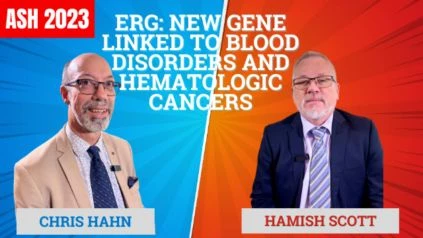Hamish Scott, MD, serves as the Head of the Department of Genetics and Molecular Pathology at SA Pathology in Adelaide, Australia. In collaboration with his colleague, Chris Hahn, MD, who heads the Molecular Pathology Research Laboratory, Dr. Scott shares insights into a groundbreaking study during an interview. The research stemmed from a case involving a family with thrombocytopenia and neutropenia, where the mother developed acute myeloid leukemia and myelodysplastic syndrome.
Their investigation led to the discovery of a novel predisposition gene, ERG, associated with bone marrow failure and hematological malignancies. The study uncovered a missense mutation in the ERG gene among affected family members, particularly within the ETS DNA binding domain. Intriguingly, the researchers observed somatic gene rescue in these individuals, indicating an attempt by the body to replace the mutant allele with a normal one.
To validate their findings, the team conducted functional assays, demonstrating loss of function variants in ERG, affecting DNA binding and nuclear localization. Further experiments using a fetal liver assay confirmed the role of ERG in cytokine-independent growth and leukemia development.
The researchers expanded their study through Matchmaker Exchange and collaborations, identifying a significant cohort of patients with suspected pathogenic lesions in the ERG gene. The majority of these variants were missense mutations, primarily within the ETS DNA binding domain.
Dr. Scott and Dr. Hahn emphasize the potential clinical implications of their findings, proposing ERG screening in germline panels for bone marrow failures and hematological malignancies. They speculate on a spectrum of phenotypic presentations associated with ERG mutations, underscoring the importance of immediate impacts on patient treatment, including considerations for transplantation.
While acknowledging uncertainties about the wider spectrum of ERG mutations and phenotypes, the researchers express excitement about their initial strides in describing this new disease entity. They welcome collaboration and communication from others studying ERG variants, recognizing the ongoing need for further elucidation in this evolving field of research.

